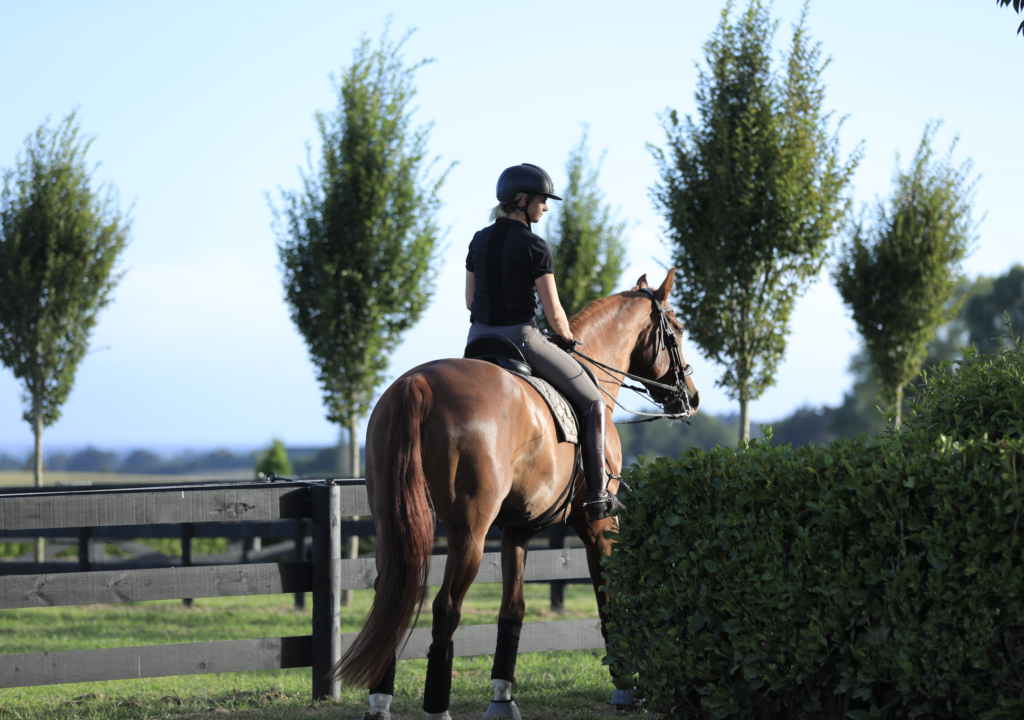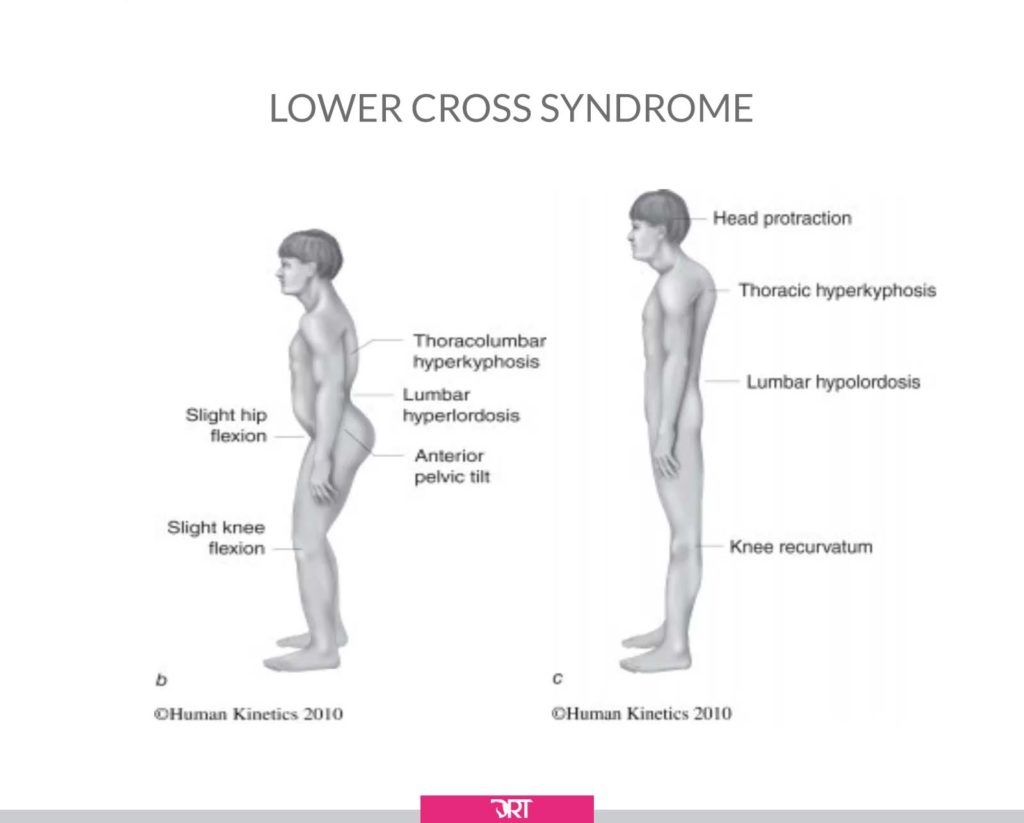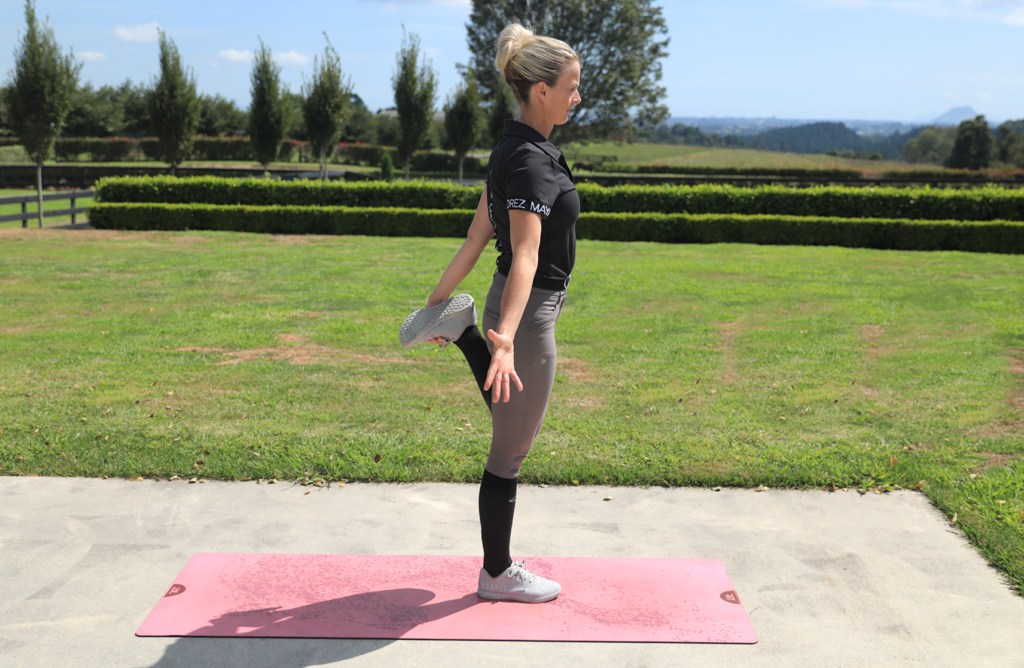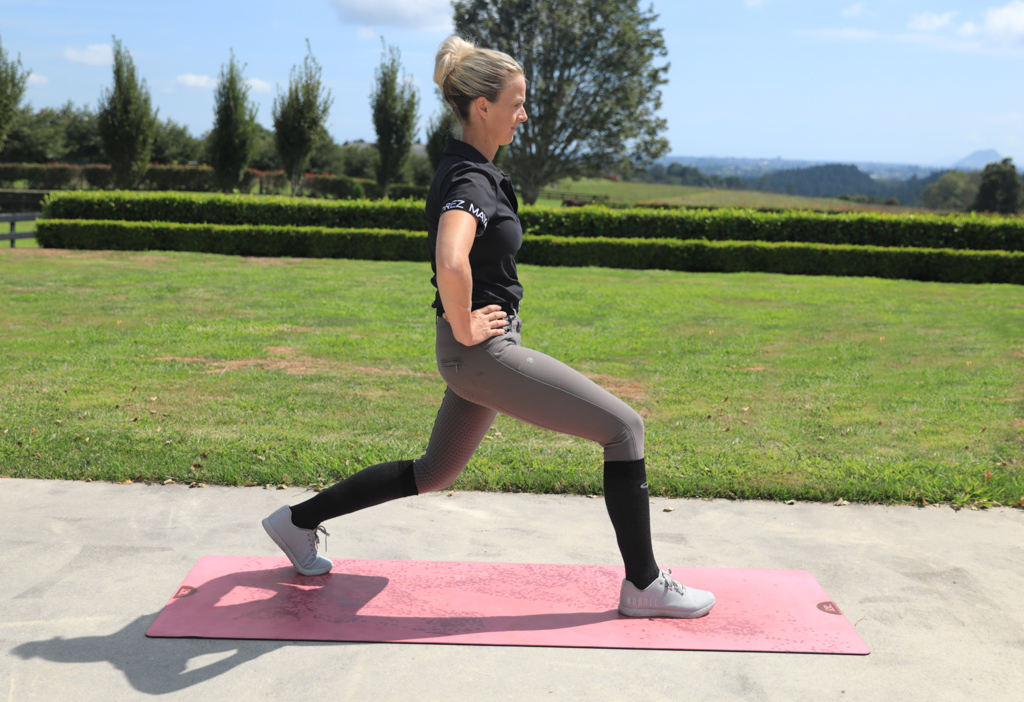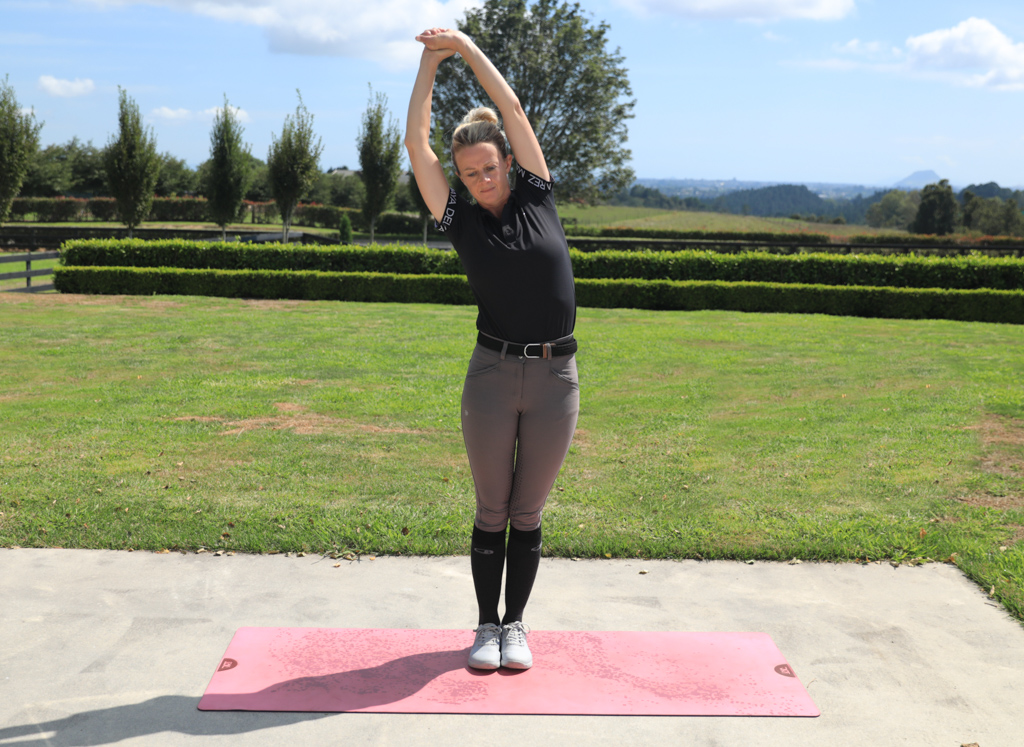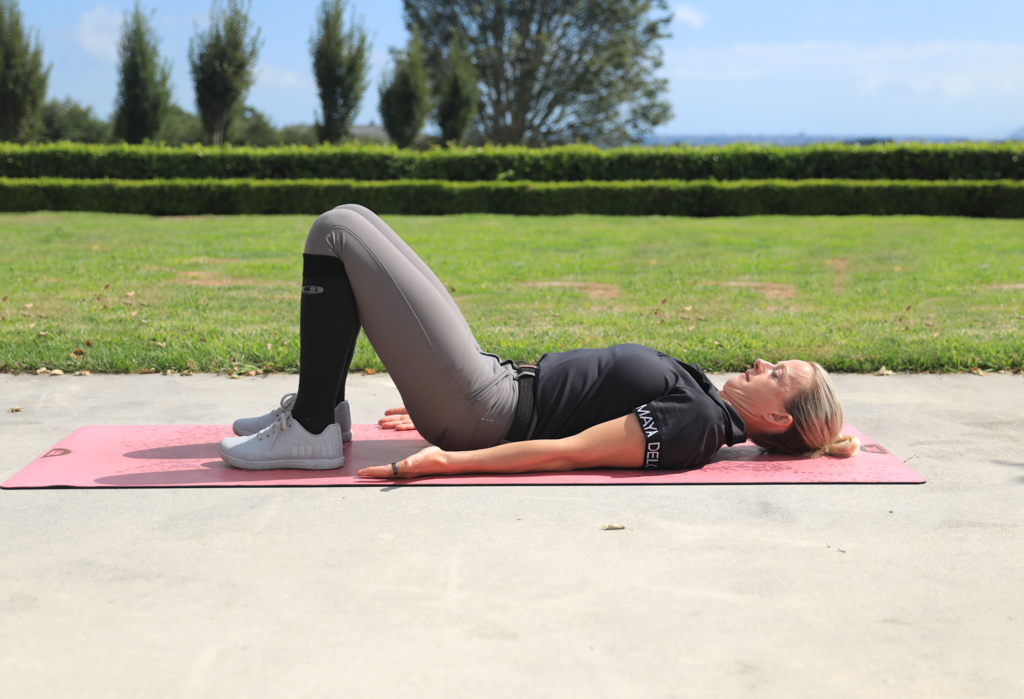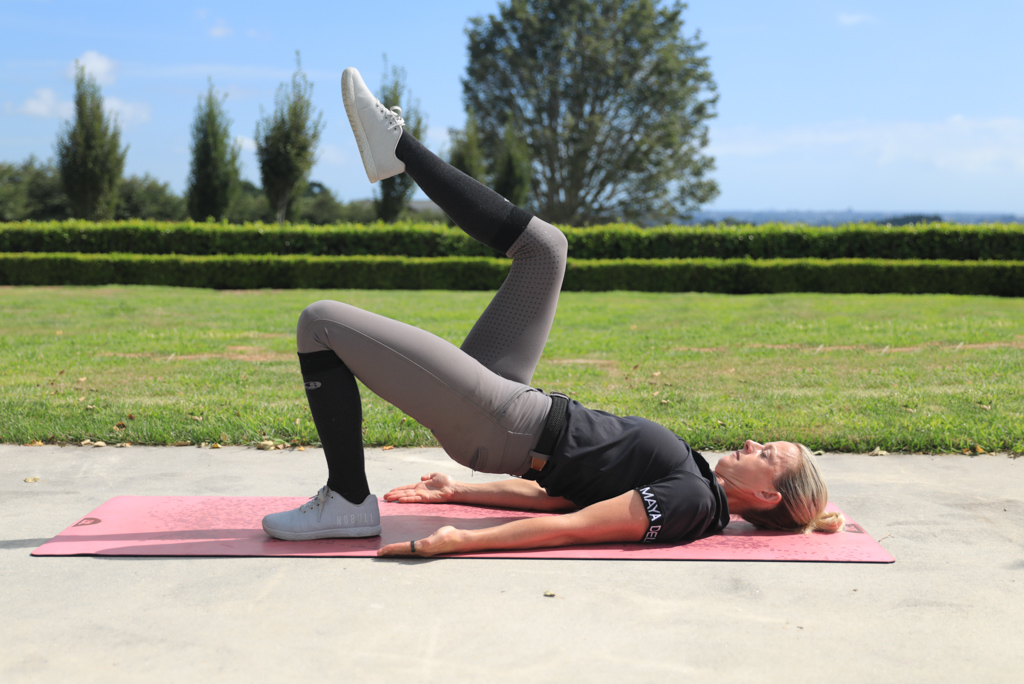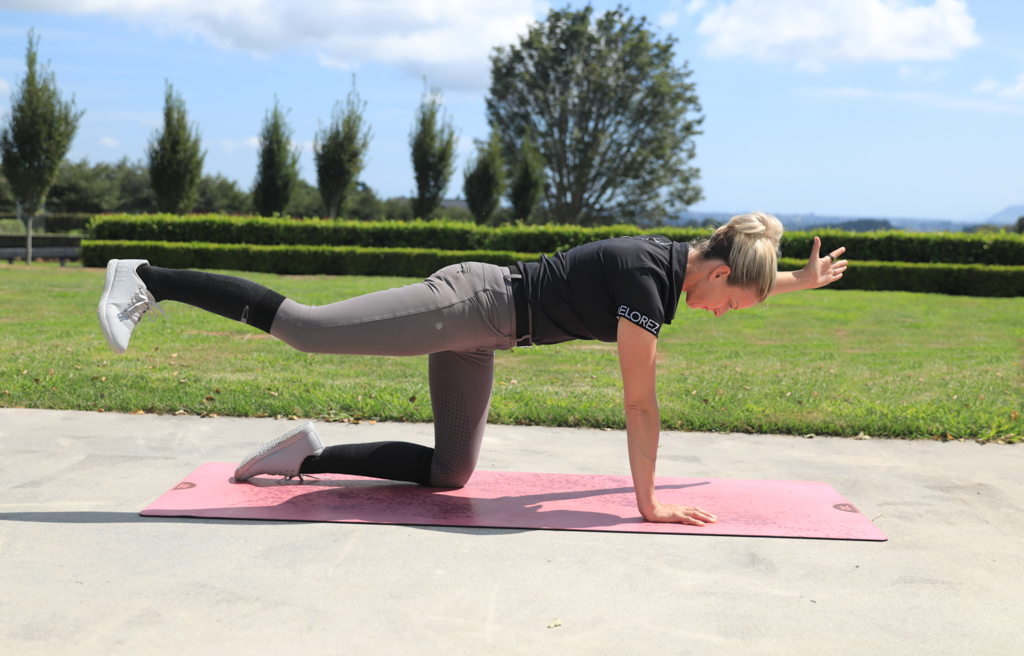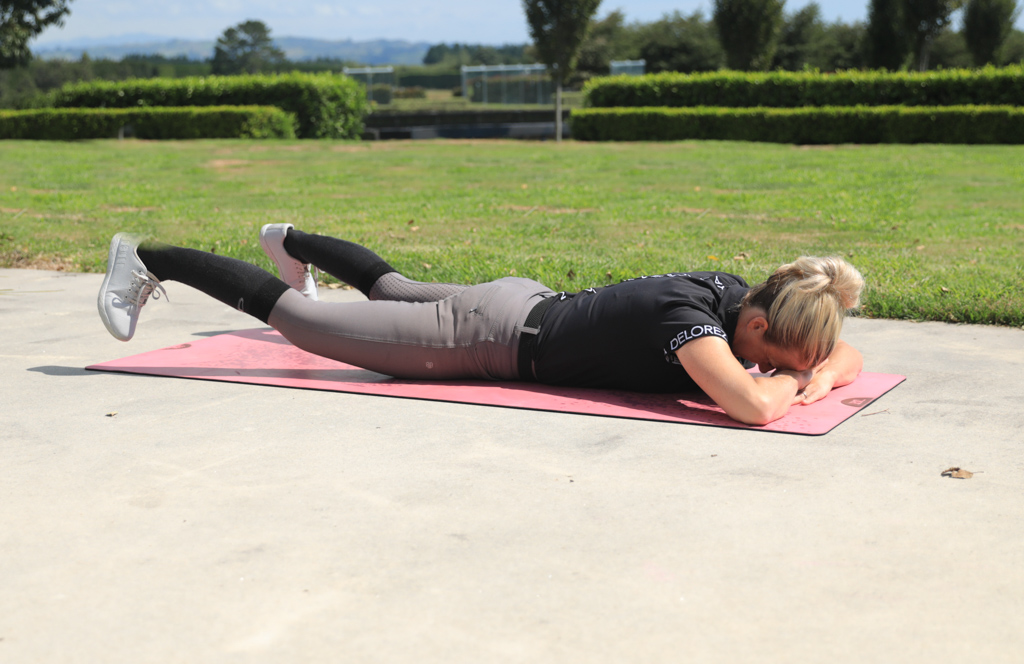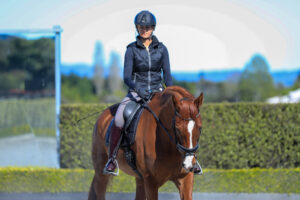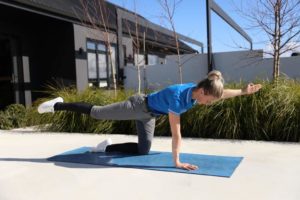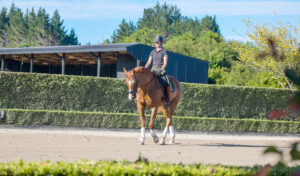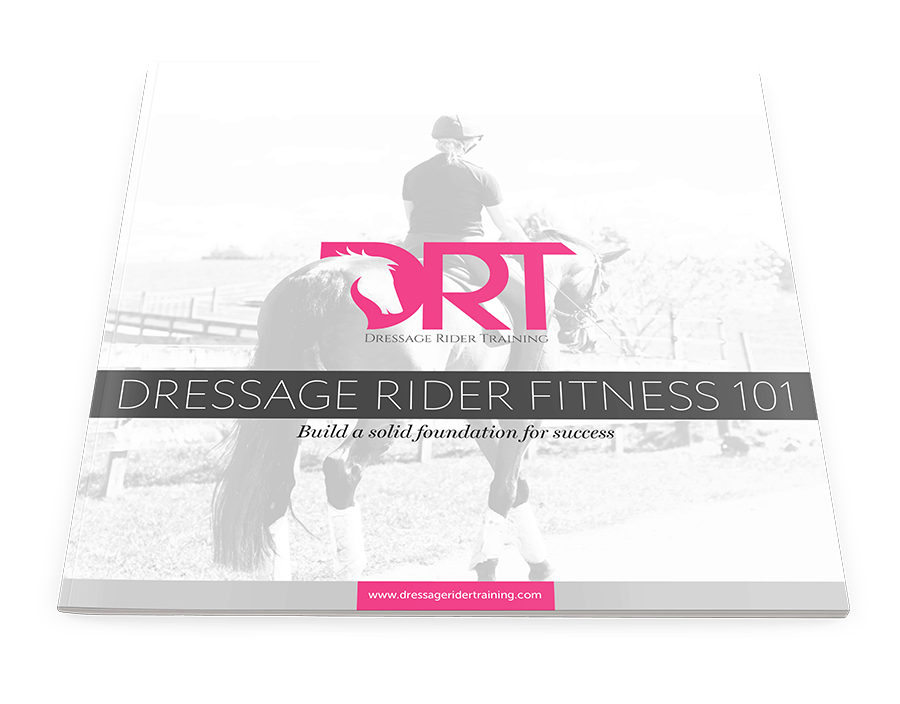Lower Cross Syndrome In Dressage Riders
Lower cross syndrome is common scenario for riders. Learn how you can improve it by understanding more about your alignment.
Lower cross syndrome in todays society is common and when you place tight hips and a tight back into the saddle, without proper recruitment of your abdominals, it can lead to bouncing or even pain and niggles down the track.
Having nagging lower back pain is also a common problem amongst dressage riders, not to mention tight hips! So today I thought I would try and help bring some light to it and ways in which you can help it.
Sitting, long days at your desk, driving and/or sedentary lifestyle promote this posture, so unless you do some training off your horse you may find that riding can aggravate the scenario.
“Posture is the position from which movement begins and ends. Ideal posture is that state of muscular and skeletal balance which protects the supporting structures of the body against injury or progressive deformity, irrespective of the attitude in which these structures are working or resting. It is during a state of ideal posture that the musculoskeletal system will function most efficiently.” Paul Chek
What causes lower cross syndrome?
Both Upper Cross Syndrome (UCS) and Lower Cross Syndrome (LCS) could be referred to as Modern Society Syndrome due to the amounts of modern activities which can add to these postures.
UCS and LCS can be created by things such as sitting, computer use, smart phone use etc. However these are not the only cause. The main reason these postures happen is more likely due to the lacking of certain behaviours, namely stretching and strengthening.
When one muscle group gets overworked, overused and tight without adequate rebalancing. The opposing muscle group becomes inhibited and loose. Then when this continues, days, upon weeks, months and years. Poor posture and alignment develops.
Sitting and using your computer and phone isn’t the devil by all means, I mean I run an online business so I spent ALOT of time on both. It’s the lack of strength and mobility work coupled with this that brings the main issue.
Spending hours sitting in a chair does nothing for your glute recruitment and naturally shortens your hips. While there your lower abdominals will take a nap and your lower back shorten and tighten. So if you don’t rebalance the body and move it in general to help restore natural balance those areas will become tighter and tighter while others weaker and weaker.
Then overtime that postural balance get more and more out of alignment.
Posture out of saddle relates to posture in the saddle
When your posture is pulling you in one direction often this can result in you habitually leaning backwards to counteract that balance. So then when you go to sit in the saddle, you may find that you are naturally leaning back to counteract the balance happening through your pelvis.
In your everyday day life, if your pelvis is tilting forward and your legs are out of alignment this can lend to an environment that forces you to want to lean back behind your central line of gravity, to create balance.
If the bones aren’t aligned correctly—which means stacked one on top of the other—they will have to compensate for the misalignment.
Your body will naturally find balance one way or another, as one area tightens and tips forward the opposite will oppose and counteract this.
So if one bone moves forward, another often has to move backwards to balance the forward movement. This happens with individual bones as well. If the top of a bone moves in one direction its opposite end with likely move the other way.
The way it works in the body as a whole often follows a similar pattern. The knees lock backwards forcing the thighs forward. The thighs that are forced forward take the pelvis with it, either tucking it under or pulling it forward in a neutral position. The upper back rounds backwards against the forward movement of the pelvis and finally, the head moves forward to compensate for the backward movement of the upper spine.
All of this then of course will be reflected in the saddle. So paying attention to your posture on the ground is ultimately going to pay off in the saddle. Not just for that pretty aligned picture, but to help you continue to ride for as long as you choose and prevent wear and tear.
It’s important to note that weak and tight are sometimes interchangeable, you can have an extremely tight muscle that is very weak and also a long muscle that is very tight.
Ultimately it comes down to looking upon your riding holistically. How you move off the horse, reflects how you move on the horse. The whole body needs to be looked at as an entire unit and addressing what environmental behaviours are promoting your posture and what new behaviours can be created to improve it and help rebalance it again.
What is lower cross syndrome?
Lower-Crossed Syndrome (LCS) is also referred to as distal or pelvic crossed syndrome. It refers to tightness in one muscle group and the opposing muscle group having weakness.
The diagonal relationship of the muscles and how forces of each muscles group affect the posture and pull it out of alignment. The ‘cross’ is due to a combination of tight muscles and weak muscles, which from a side view are seen as an X.
Lower Cross Syndrome is characterized by shortening of the lumber erectors, Iliopsoas, rectus femoris and tensor fasciae latae with lengthening of the lower abdominal muscles, hamstrings and glutes. Most people with Lower Cross Syndrome also have Upper Cross Syndrome.
Weakness of the deep abdominal muscles crosses with weakness of the gluteus maximus and medius. This pattern of imbalance creates joint dysfunction, particularly at the L4-L5 and L5-S1 segments, SI joint, and hip joint.
Remember my article about posture and wheel alignment? When your body isn’t correctly lined, it will create undue wear and tear on your joints, just like when a car isn’t correct in it’s wheel alignment. One set of tires will wear out quickly than the other.
When muscles become overused and extremely tight without the opposing muscle group to counteract that, it causes postural changes like anterior pelvic tilt, increased lumbar lordosis, lateral lumbar shift, lateral leg rotation, and knee hyperextension.
These shifts then put extra load on joints and can lead to overuse injuries and long term setbacks.
Lower Crossed Syndrome has 2 different ways of presenting itself, one manifested in the lower back (left) and the other in the hip (right).
Two types of lower cross syndrome
There are two known subtypes of lower cross syndrome, type A and type B. The two types are similar and involve the same main muscle imbalance characteristics and in most cases the same stretches and exercises to help improve.
Type A
This imbalance manifests mainly in the hip, while for type B the imbalance mainly manifests in the lower back.
Type A lower cross syndrome is also called “the posterior pelvic crossed syndrome”. You will see the hip flexors are shortened, the pelvis is tilted anteriorly and the hip and knee are in slight flexion.
Type B
Type B lower cross syndrome is called “the anterior pelvic crossed syndrome”. In this type the abdominal muscles are too weak and too short. The pelvis is postured more anteriorly and the knees are in hyperextension.
Lower Crossed Syndrome Treatment
If you can see traits of your own posture in these images, then the key is to work on restoring the shorter muscles and then strengthening the weakened muscles. This is based on Sherrington’s Law of reciprocal inhibition which states that when one muscle is shortened or tightened its opposite muscle relaxes.
How to improve lower crossed syndrome?
Here are some key exercises and stretches to focus on to help restore and rebalance your posture.
Remember to that your environment needs to be addressed too. Being aware to your posture throughout your day and doing your best to minimise factors that pull you out of alignment.
Many of these situations may or may not be able to be adjust immediately, so important attention to your strengthening and stretching will help minimise the effects. Actively aging and strengthening your body for longevity.
The more you do to promote ideal posture off the horse and the more work you put into creating your ideal posture, the more this will be reflected in the saddle.
Lower Cross Syndrome Stretches
First let’s begin with stretching out the tight muscles. Now it’s important to remember as I mentioned above, just because a muscle is tight, doesn’t mean it is strong. We can have tight weak muscles and long strong muscles. The key is balance and the body working as a whole unit.
So by working on stretching and strengthening we help rebalance the body and improve overall posture and alignment. This is why DRT is all about strength and suppleness, not just one.
Standing quadriceps
Standing with your right leg on the ground, take a hold of your left.
Think of tucking your tail underneath you so that your glutes are engaged.
Draw your knee down towards the ground on your right leg and feel a stretch through your quads, hips and even into your psoas. Where you are the tightest, is where you will feel this the most. So watch as the stretch changes the more you do it.
Hold for 20-30 seconds and swap sides.
Kneeling lunge
Step your left leg out in front of you, with your right leg behind and bend down into a lunge position.
Lower down until your back leg is close to the ground and you feel stable. Feel free to hold onto something for support if you need.
Then hold this position while tucking your tailbone underneath you and engaging your glutes.
To advance, lower your back knee down for more of a stretch and really tuck your tailbone to find that stretch in your hip. You can adjust by taking knee all the way to the ground and reaching your right arm up above your head too.
You will feel this stretch through your quads, hip flexors and also through into your psoas.
Hold for 20-30 seconds and swap sides.
Side Obliques
Standing with both legs together, reach your left hand above your head, by holding it with your right and lean over to the right.
Think about keeping your weight even in both of your feet and really grounding your feet into the ground at the same time you think about really reaching up to the sky.
Lean over as far as you can until you feel a stretch down the side of your torso and down through the side of your hips and legs too.
Hold for 20-30 seconds and swap sides.
QL stretch
Sitting on the ground, stretch your right leg out to the side of you, with your left foot tucked in.
Then reach your right hand towards your right foot and turn towards your left as you lean to the right.
Feel this stretch down the side of your torso into your obliques, psoas and quadratus lumborum (QL)
Hold for 20-30 seconds and swap sides.
Cat Stretch
Start with all fours on the ground, then think about tucking your chin to your chest and your tail bone underneath you by really engaging your lower abdominals and squeezing your bottom.
As you do both of these things, think of rounded out through your entire spine, especially your lower back and making your spine like a cat.
Soften back down again and then lift back up again to round your spine.
Do these 4-6 times very slowly and when at the top hold for 10seconds or a few breathes to help lengthen out the muscles of your lower back.
Childs pose
Kneeling on the ground, sit back onto your heels as you reach your hands forward onto the ground.
Think about lowering your chest towards the floor as you really reach your hands forwards.
Feel this lengthen your lower back. Hold for 20-30 seconds or 5-6 really deep breathes.
Strengthening Exercises For Lower Cross Syndrome
Now let’s take a look at exercises to help strengthen your posture and improve recruitment of those weaker muscles.
Lower abdominal recruitment
Lay down on to the ground with your back lengthened on the floor.
Bend your knees so that your finger tips can just touch your heels.
Tuck your chin to lengthen the back of your neck and think about lengthening your entire spine down across the ground and flattening your back onto the floor.
Then tuck your tailbone using your lower abdominals and think of pulling your pubic bone up towards your ribs. This is all about engaging your lower abdominals and your TVA.
Hold this position for 10-20 seconds, while breathing and repeat 6-8 times.
Bridges
Laying on the ground, bring your feet in towards your bottom and have them hip distance apart.
Engage your lower abdominals as above and lift your hips off the ground by squeezing your glutes.
Hold at the top for 10 seconds, really engaging both lower abdominals and your glutes, then slowly lower. Repeat 6-8 times slowly.
Adductors, lower abdominals and glutes
Now we engage all three areas. So set up as we have for the previous two exercises.
Engage lower abdominals, squeeze glutes, tuck your tailbone under and now squeeze the foam roller with your thighs to engage your adductors. All the muscles that help stabilize your pelvis are now engaged.
Then lift your hips up of the ground into bridge, hold for a breathe, then lower.
Repeat 12-15 times.
Single leg bridges
Same as above, but now we are testing our lateral strength too.
Laying on the ground, first engage your lower abdominals, glutes and TVA. Then lift your right leg off the ground while you push through your left foot up into bridge.
Hold your bridge in this upper position for a breathe, then lower.
Repeat 12-15 times each side.
Horse stance pointer
This is all about engaging all the muscles that help stabilise our posture.
Kneeling on the ground with all fours, then reach your left arm out to 45 degrees, while your right leg lifts out in the opposite direction.
Hold in this position for a breathe, while you focus on really engaging your lower abdominals and pushing out through your heel to engage your glutes.
Try not to let your back arch and keep your back super still as you hold this position.
Repeat 12-15 times on one side, then move to the other.
Squats
One of the best exercises to engage those glutes and get them working.
Start with your legs a little wider than your hips and your feet slightly turned out.
Then lower down as far as you feel comfortable and stand back up again. You can use a chair here if you wish and think of sitting back onto it and up again.
As you do this, engage your core, lift your chest and really squeeze your bottom as you stand up.
Repeat 12-15 times. 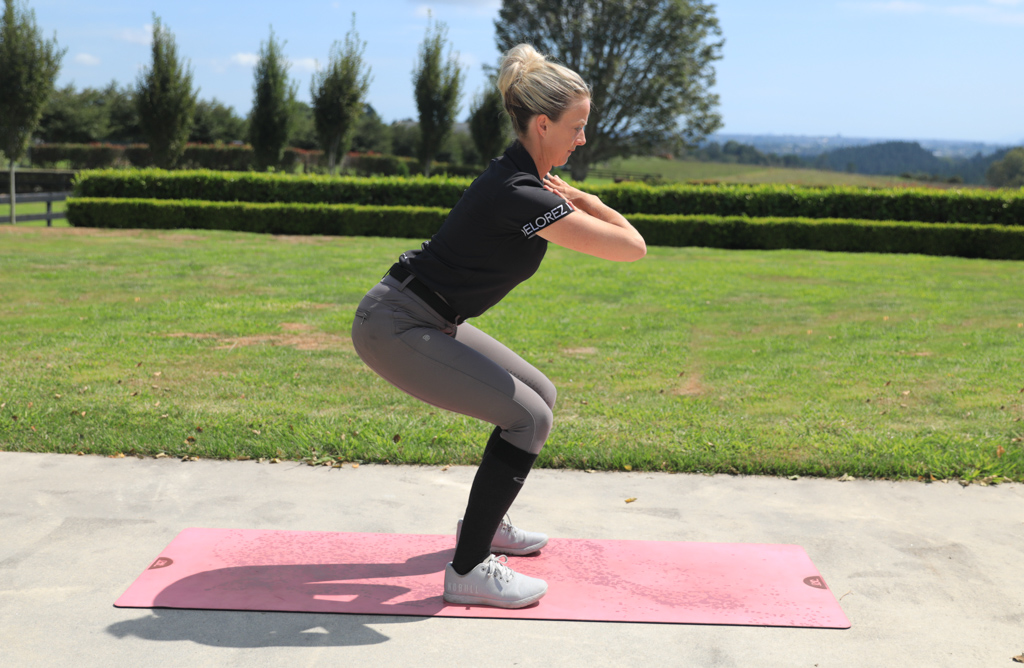
Lunges
With your right leg out in front of your left and your torso up right, lower yourself down towards the ground and up again.
Only go as low as you feel stable and your body allows. You can use a chair for support if you feel unstable and slow the movement right down if you need.
As you do this focus on tucking your tail and engaging those lower abdominals while maintaining neutral spine.
Lower locust
Laying on the ground, tuck your tail to engage your glutes and lift both your feet up off the ground.
Be sure to engage your lower abdominals to support your back and only lift as high as your body can comfortably do without compromising posture.
Keep head down and feet flexed as you do it and try holding for 10 seconds then lower. If two legs is too much, go with one leg at a time and toes pointed.
Standing pelvic tilts
This is great to help you isolate muscle groups and bring awareness to your pelvis.
Standing with both legs hip distance apart and your hands on your hips.
Then think about really tucking your pelvis and as you do that use your lower abdominals to help tilt your pelvis while you squeeze your bottom. Then return back to normal and repeat again.
Try holding the tuck for 10 seconds and then repeat 6-8 times.
So there you have it, some stretches and exercises to help you with lower cross syndrome and ultimately help you improve your position in the saddle.
Try doing these exercises a couple of times per week as a circuit. Repeat it 3-4 times through and notice how by improving your posture you help relieve niggles and by putting time into your posture off the horse, you will find this reflected in the saddle too.
Want more help with your hip suppleness, we have create a 21 day program specific to riders to help you address just this.
Here is a snippet from the program and you can find all the information here about it.
Want more help with your dressage position? Check out these articles
Upper cross syndrome in dressage riders
Glute exercises for dressage riders
Flexor chain exercises for dressage riders
More articles
Dressage Rider Training Program
Join other participants on our 12-week 'step-by-step' online rider
training program. Improve the 5 components of your riding.
Only available 3x per year.
see full details & register your interest
